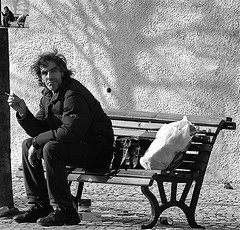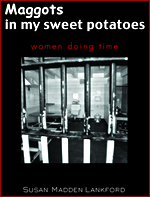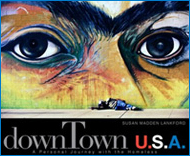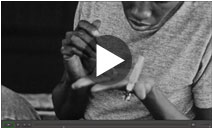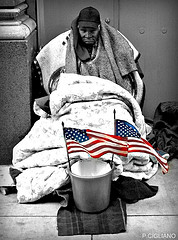 San Diego’s yearly Stand Down event just passed recently, hosted by one of the oldest and most well-known programs to help homeless veterans. In case you’re not familiar with it, The Veterans Village of San Diego website describes the program as follows:
San Diego’s yearly Stand Down event just passed recently, hosted by one of the oldest and most well-known programs to help homeless veterans. In case you’re not familiar with it, The Veterans Village of San Diego website describes the program as follows:
In times of war, exhausted combat units requiring time to rest and recover were removed from the battlefields to a place of relative security and safety. Today, Stand Down refers to a community-based intervention program designed to help the nation’s estimated 200,000 homeless veterans ‘combat’ life on the streets.
VVSD organized the nation’s first Stand Down in 1988. Since then, the program has been widely replicated nationwide. Today, more than 200 Stand Downs take place across the country every year. ‘The program has become recognized as the most valuable outreach tool to help homeless veterans in the nation today,’ according to the National Coalition for Homeless Veterans.
This video report from The New York Times YouTube Channel provides an inside view of the 2009 Stand Down. Among other things, it looks at the growing and disturbing new demographic, homeless veteran women:
A stand down provides a number of basic services that are lacking in life on the streets: showers, haircuts, medical and dental attention, benefits assistance, counseling, 12-step meetings, and more. Some of these things, like the simple old-fashioned shower, we take for granted, yet having them makes all the difference in the world for those who lack them. How can you find a job and pull yourself up if you cannot even get clean enough for an interview?
While we cannot embed it in this post, the full 60 Minutes report is available online. You can watch it here.
When looking at social programs like this, we need to remember that many of these people simply need a hand up, not a handout. The investment in our community returns manyfold in both tangible and intangible ways. This is why we always talk about our stance on this subject being a bipartisan win-win scenario. From the conservative perspective, rehabilitating the homeless back into society makes sound financial sense — as it will reduce the overall cost to the system over the long term.
From the liberal perspective, the socially conscious angle is the one that is of most importance. The vital thing is to note that despite the differences in how they reach that conclusion, both sides of the political equation should find it easy to see that it is, indeed, more expensive to do nothing!
Source: “WATCH: Can Three Days Make A Difference For Homeless Veterans?,” The Huffington Post, 10/17/10
Source: “Homeless Vets: Does Anyone Care?,” CBS News, 10/17/10
Image by NYCUrbanscape, used under its Creative Commons license.
Visit Us on Facebook: Humane Exposures Publishing , downTownUSA, Maggots in My Sweet Potatoes, It’s More Expensive To Do Nothing


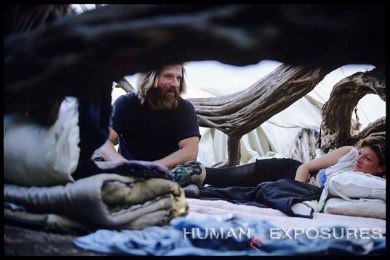 Here at HUMAN
Here at HUMAN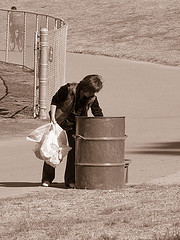 We live in an amazing age, the age of information, which has a direct and palpable impact upon the issues we try to address. One great example is homelessness, a major focus of the works we produce. Not only is social media an excellent tool for educating the populace about the problem, but it can also give a voice to those who are experiencing it.
We live in an amazing age, the age of information, which has a direct and palpable impact upon the issues we try to address. One great example is homelessness, a major focus of the works we produce. Not only is social media an excellent tool for educating the populace about the problem, but it can also give a voice to those who are experiencing it. Most people just walk right by the homeless. People living on the street are often viewed as the detritus of society, failed lives with no potential for betterment. Not to say that everyone feels this way, but there is a large segment of the population that does.
Most people just walk right by the homeless. People living on the street are often viewed as the detritus of society, failed lives with no potential for betterment. Not to say that everyone feels this way, but there is a large segment of the population that does.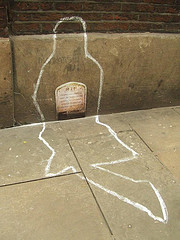 It was not all that long ago that we wrote about a
It was not all that long ago that we wrote about a  The homeless are particularly vulnerable to violence and crime. Exposed on the street without shelter, they make appealing targets for the distorted personalities that prey on others. Recently, attacks on the homeless have been on the rise, and it’s finally drawing the attention of those in power.
The homeless are particularly vulnerable to violence and crime. Exposed on the street without shelter, they make appealing targets for the distorted personalities that prey on others. Recently, attacks on the homeless have been on the rise, and it’s finally drawing the attention of those in power. Photography is a powerful tool for getting across the humanity behind the major issues of the day. Of course, at HUMAN
Photography is a powerful tool for getting across the humanity behind the major issues of the day. Of course, at HUMAN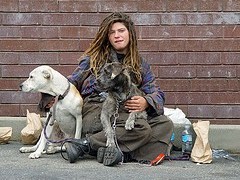 Among the significant number of homeless teens on the street there are many who have been reduced by circumstances to prostitution. It’s a grim and ugly reality.
Among the significant number of homeless teens on the street there are many who have been reduced by circumstances to prostitution. It’s a grim and ugly reality.